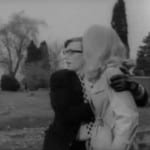
While in graduate school at Georgetown, I had one faculty member who, upon learning that I was a student of Russian and Russian Area Studies, noted rather dramatically: “Cyrillic rots the brain!” I guess old Cold Warriors never die.
Then this morning comes this post, found courtesy of the original Edupunk, Jim Groom. Once you read past the zombie-related stuff (ahem), it is a fairly good explication of what blogs can do for you. Not brain-rotting in the least, actually. “They’re coming to get you, Barbara!”
And if you’re not already a reader of Jim’s blog or his Twitter feed, I highly recommend them both for ideas and connections related to teaching and learning in a network age, as well as A-list B-movie commentary. Among other gems from Jim this past week: news that the actress who played Barabara in Night of the Living Dead is now a communication consultant in Flagstaff. How’s that for connectivism in action?!
This line of thought (connectivism and the undead) fed nicely for me into a blogpost I read this morning as well, from Gardner Campbell. In discussing how today’s more complex learning environments require correspondingly more complex models of assessment, he notes that
Rather than proliferate crude measures of recall or reductive “normed” evaluations of various templated essays, we should think much more deeply and comprehensively about assessment. To do this, we’ll have to start with what it means not only to learn something in the sense of committing it to memory, vital as that is, but also to understand it, to be able to sense and articulate and share the structure of that knowledge as well as the conjectures and dilemmas that surround it and propel it into new areas of inquiry. We need to think about domain transfer, and ask what kind of learning fosters the analogical and metaphorical thinking that leads to conceptual breakthroughs. We need to think about the teacher’s theory of other minds, as well as the students’. We need to master strategies of indirection that empower each other to imagine…
In other words, through rich, digital means of “complexifying” learning such as blogging—at its best collaborative, reflective, and emergent authoring and creation—learners cannot and should not be zombies. And neither should we.

